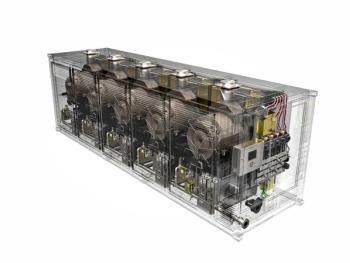
Myth: Combustor development is easy
Most operators require that a gas turbine can operate over a reasonably wide range of fuels. Specifically, in pipeline and gas field duty, there is an expectation that a gas turbine can operate over a significant Wobbe Index range.
The Wobbe
index is a number that relates the fuel’s
heating value to its specific volume. But there are some misconceptions
about this: Wobbe index only dictates the
fuel system’s pressure drop to the chemical energy input rate into the gas turbine for a specific fuel. Effectively, if two different fuels have the same Wobbe index, they will have the same pressure drop or volume flow through the fuel control system.
This is important since all components in the fuel system (pipes, valves, injectors, orifices, and so forth) must be sized for a specific volume flow and pressure drop.
If the Wobbe Index of a given
fuel changes drastically, the fuel system may not be able to handle the required volume flow to maintain the energy input
into the combustor required to reach the
gas turbine’s design output power (low Wobbe Index) or the fuel control valve
cannot provide adequate control at part
load (high Wobbe Index).
The Wobbe index relates two basic
physical properties of the fuel but does not provide any information on combustion kinetic properties such as flame
speed, reaction rate and auto-ignition
delay time. Thus, when determining whether a specific fuel can be used in a
gas turbine, one cannot simply rely on
Wobbe index but must look at all the combustion kinetic properties.
Another combustion property that
impacts the combustor design and sizing
is the reaction rate of the fuel-air mixture. Several hundred different reaction and sub-reactions occur when natural gas and air combust. The reaction rate characterizes how quickly these reactions are completed
and the heat from the combustion
reactions has been fully released.
All combustion reactions must be finished
before the mixture exits the combustor and enters the turbine section. Consequently, the reaction rate sets the mixture’s required residence time in the combustor. Further, depending on the amount of mixing, turbulence intensity and overall aerodynamic flow structure in the combustor, this usually then determines the physical volume of the combustor or the combustor transition piece.
For gas fuels this is normally not a difficult design challenge as most reactions complete relatively quickly. But when liquid fuels are used that must be atomized and evaporated first or, even worse, when heavy hydrocarbon liquid drop-outs occur in gas fuels, the transient time is also related to the liquid droplet size. Liquid droplets must fully evaporate before the fuel can react with the oxygen in the air.
(You can read all of this two part series in the November December issue of Turbomachinery International and the 2014 Turbomachinery Handbook)
Newsletter
Power your knowledge with the latest in turbine technology, engineering advances, and energy solutions—subscribe to Turbomachinery International today.




